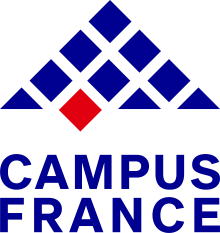News
2024/01/09
Abstract submission extended to January 31, 2024
2023/12/22
Abstract submission extended to January 10, 2024
2023/12/07
Abstract submission extended to December 25, 2023
Important Date
Abstract submission deadline
31 January 2024
Registration deadline
31 January 2024
Payment deadline
20th February 2024
Plenary scientific meeting
4th and 5th June 2024
Post-conference field trip
6th and 7th June 2024
Background
The first France-Taiwan Symposium in Earth Sciences (hereinafter referred to as FTSES), entitled as "the Sino-France Colloquium on geo-dynamics of the Eurasian-Philippine plate boundary", was held in Taipei in 1984, and the follow-up 2nd FTSES was held in Paris in 1988. Afterward, it experienced the 1990 "France-Taiwan Marine Science and Technology Symposium" and the 1991 TAICRUST Workshop. The 3rd FTSES was held back at the Taipei International Convention Center in 1995. At this time, it has become an important tradition for the academic circles of the two sides to host the FTSES regularly.
The 4th FTSES, entitled as "Active subduction and collision in Southeast Asia: Data & Models international conference", was held in Montpellier, France 1999. In 2005, the 5th FTSES, also named as "Geodynamics and Environment in East Asia (GEEA)", was held in Taitung, Taiwan. In 2010, the 6th FTSES was held in Aix-en-Provence, France, and the 7th and 8th FTSES were held in Hualien, Taiwan, and Pau, France, in 2014 and 2019, respectively. The FTSES has become an important academic event held every five years.
The coming FTSES will be held in early June 2024 in Penghu, Taiwan, and the post-conference field trip will be on the islands southern off Penghu.
Main Topics
The goal of this symposium is to bring together French and Taiwanese geoscience researchers to promote the exchange of achievement. Five scientific topics of this symposium are listed below. The agenda will be arranged depending on the submission status.
1. Geophysical imaging of subduction and collision: New perspectives
2. Challenges in geodynamics: Kinematic reconstruction and 3D numerical modelling of the inversion of rifted margins
3. Earthquakes: Improved connections with long-term rheology and erosion forcing
4. Extreme events: Earthquakes and climate changes in the sedimentary record
5. Prospective energy and risks associated to exploration






